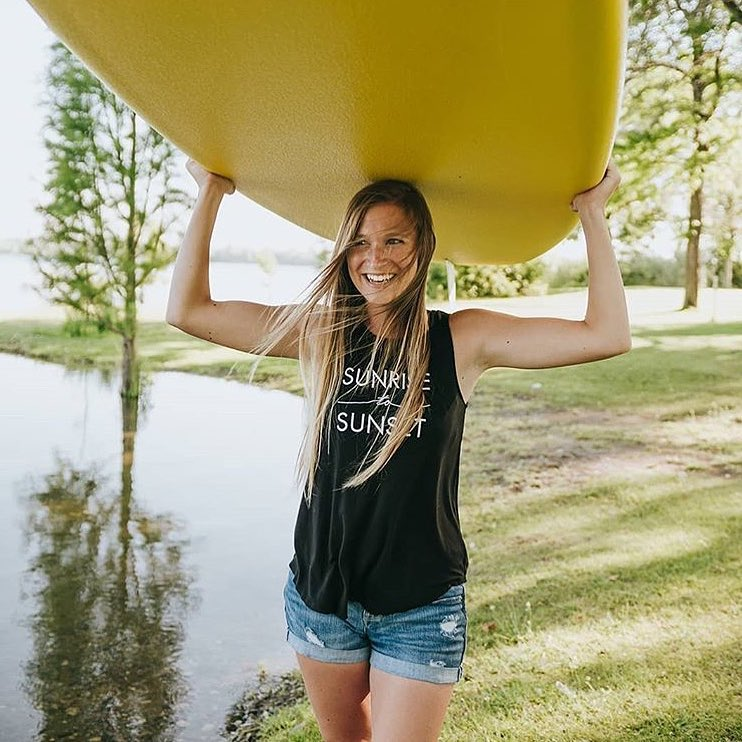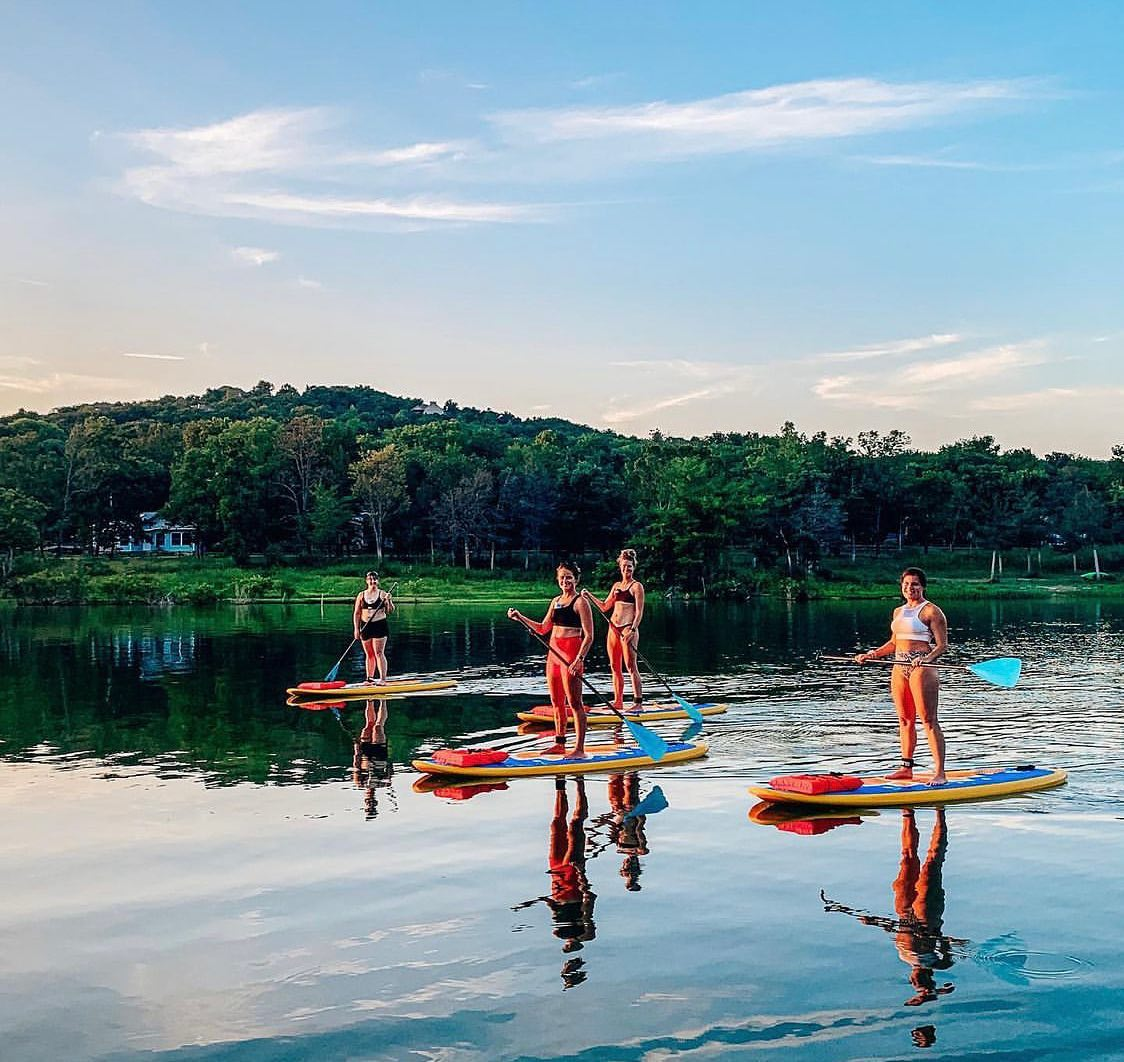
Stand Up Paddle Boarding: Your Ultimate Guide to Finding the Perfect SUP
We answer all of your stand up paddle board questions in this article.
Introduction Imagine gliding smoothly over crystal-clear waters, surrounded by stunning scenery, with the sun warming your back and a gentle breeze in your hair. That's the beauty of stand up paddle boarding (SUP) – it's an incredibly fun, serene, and invigorating way to explore nature while also getting a fantastic workout. Whether you're just dipping your toes into the waters of paddle boarding or you're a seasoned paddler looking to upgrade your gear, selecting the right paddle board is paramount to your experience. The array of choices, from inflatable SUPs to hard boards, might seem daunting, but fear not! We're here to simplify the process and guide you to your ideal match.

Decoding the Skill Levels Every paddle boarder's journey starts somewhere, and your skill level plays a crucial role in determining the right board for you. If you're a beginner, stability is your best friend. Look for an all-around or inflatable paddle board that promises a solid foundation. These boards are not only beginner-friendly but also cater to the needs of heavier paddlers, offering the buoyancy and balance you need to master the basics.
Intermediate enthusiasts might prefer something a bit more agile. At this stage, a shorter, more maneuverable board becomes your ally, allowing you to experiment with different SUP disciplines. Maybe you're itching to surf those gentle waves or navigate the thrilling currents of a river. And let's not forget about the convenience of an electric pump, a game-changer for those looking to save time and energy.
For the experienced paddlers out there, the call of the wild beckons for high-performance boards. If your adventures lead you to solo backcountry expeditions on tranquil waters, a longer touring board with ample storage for your gear is the way to go. Premium quality at a great price? Absolutely, because you deserve the best for your skilled pursuits.
Shape and Size Matter Your board's size and shape significantly influence its stability, maneuverability, and overall performance. This choice should reflect a careful consideration of your weight, skill level, and the types of waters you'll be navigating. Beginners should gravitate towards wider boards for easier balance, while advanced paddlers might opt for a sleek, streamlined design for speed and agility. And when it comes to water conditions, remember: longer boards excel in calm waters, while shorter ones reign supreme in choppy conditions.
The Many Faces of Paddle Boards From foam to inflatable, to hard shell, each type of paddle board offers a unique set of characteristics catering to different preferences and needs. Foam boards are affordable and durable, perfect for beginners. Inflatable SUPs offer unmatched convenience for storage and transport, making them ideal for travelers and those with limited space. Hard shell boards, though on the pricier side, provide the pinnacle of performance for those seeking speed and responsiveness.

Fins: Steering Your Course The fins beneath your board play a crucial role in tracking and stability. Most boards feature a trio of fins, but configurations can vary to enhance either stability or maneuverability. Beginners might prefer a larger center fin for a straighter, more stable ride, while advanced paddlers can experiment with different setups to fine-tune their board's performance.
Branding the Board In the sea of SUP brands, quality and durability are key. Brands like Glide stand out for their commitment to excellence, offering a range of boards that cater to all levels. Choosing a reputable brand means investing in a board that will endure the tests of time and adventure.
Accessorize Wisely A paddle board is just the beginning. Consider the accessories that come with your board or those you may need to acquire separately. A suitable paddle, a safety leash, and a convenient carrying bag are essentials for any paddler. The right accessories not only enhance your experience but also ensure your safety and comfort on the water.
Beyond the Basics When choosing your SUP, don't forget to consider the weight capacity, board volume, and hull shape—all of which affect the board's stability and performance. Whether you're a fan of the stable and user-friendly planing hulls or the sleek, efficient displacement hulls, there's a board out there for every preference.
Deck Pad and Board Shape: The Finishing Touches A comfortable, non-slip deck pad is a must for any paddle board, ensuring safety and comfort as you paddle. And the board's shape? Whether you're drawn to the versatility of a symmetrical board, the efficiency of a displacement design, or the agility of a surf-oriented shape, your choice should align with your activities and skill level.
Price: Your Investment in Adventure Paddle boards span a wide price range, reflecting differences in materials, construction, and features. While it's tempting to reach for the stars with a high-end board, finding a balance between quality and budget is key. Remember, the best board for you is one that meets your needs, supports your progression, and doesn't break the bank.

Conclusion Embarking on the stand up paddle boarding journey is an adventure filled with excitement, relaxation, and discovery. By carefully considering factors like size, shape, material, and accessories, you're not just choosing a paddle board; you're choosing a partner for countless adventures on the water. So here's to finding your perfect SUP and embracing the thrilling world of paddle boarding!


